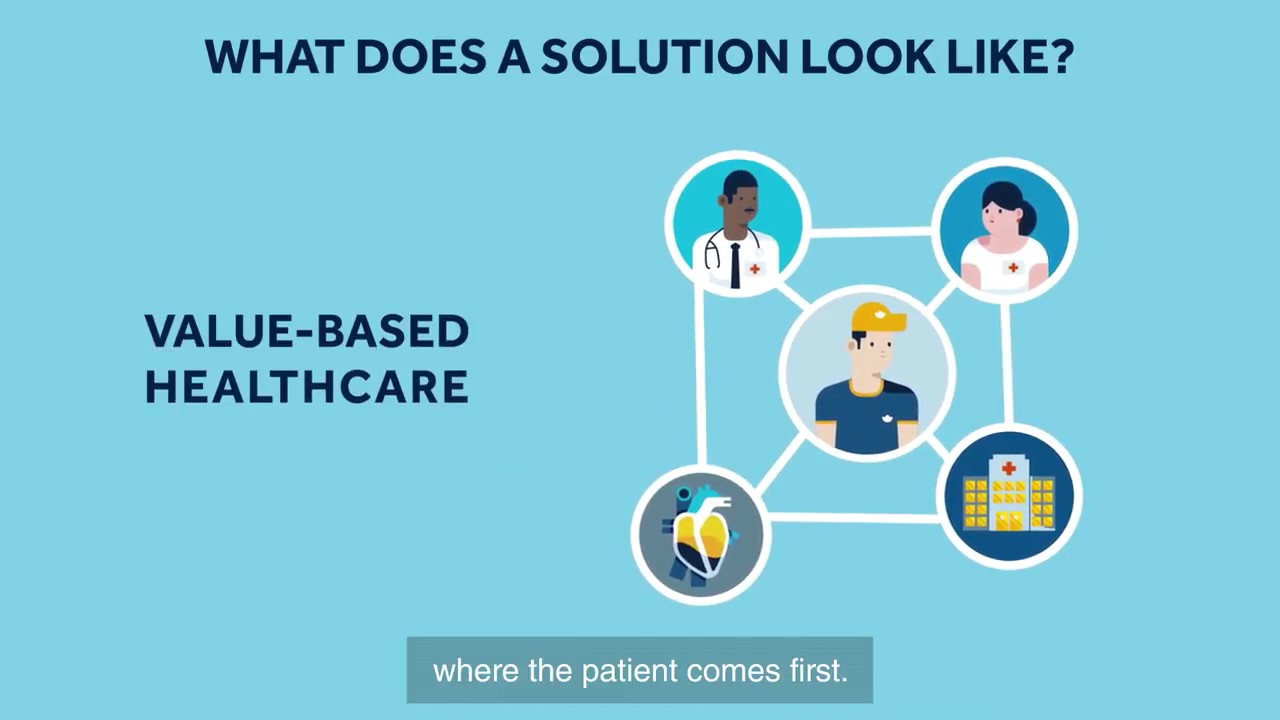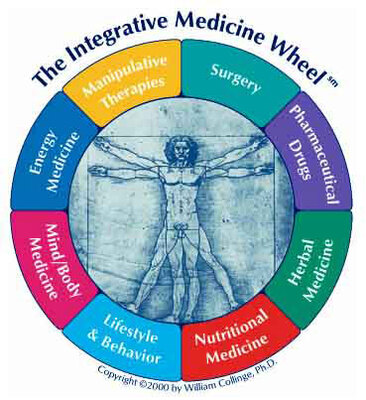Innovative Software Solutions for Value Creation in Clinical Practice
Written by Dr Sue-Ellen W. McKelvey DC PhD MBA
 The value-base of healthcare delivered is an ever-increasing focus in clinical practice. Business owners need to see the value in what they get from a healthcare software.
The value-base of healthcare delivered is an ever-increasing focus in clinical practice. Business owners need to see the value in what they get from a healthcare software.
The worldwide shut down of “normal healthcare relationships” in 2021 brings formidable challenges to all healthcare business owners. The world is expecting more interoperability and the people are wanting remote care, telehealth, more personalized care plans and greater transparency within their medical and healthcare processes.
Healthcare business owners find they need more software!
They may have already two or three software to support the basic functionality of their clinical practice, across appointment scheduling, billing RCM, all clinical notes and medical interoperability? And in 2021, the clinic needs to add a patient portal. They need to add data “trawling” software; to get reports to regulators and payers.
A practice needs to be managed more efficiently with all these new demands; multiple software is costly for a practice. What if the practice could use one software for all its needs; one that had all the required features and functions in the same database? Wouldn’t that deliver a great ROI on the move to that one software?
ROI and change management
The clinic and its business owners can trade off the pain of change with significant savings across all costs, from training to support and staff handovers ahead. All can use the same interface and only use one support desk and one set of training manuals. And all data is at their fingertips in the same database for all manner of data reports. The different users are all secured with access to only what they need to see; all can view the clinical practice from only their point of view whether the Clinician Provider Team or the Financial Administration staff. All reports are secured to a user’s security role - from clinical outcomes to practice effectiveness, client satisfaction and outcomes scoring to all clinic resource allocations and utilization measures.
Visual Outcomes is unique in being a one software for all these needs in 2021.
Key to success — both clinical and financial — in 2021
Learn to show your clinic efficiency, quality controls and outcomes of clinical care. This is only effectively managed with data from the one database; a software built to display real time data easily across all your daily clinical processes. Data of improved health outcomes, reduction of costs and review of clinic delivery teamwork. And in 2021 make your clinical practice more responsive to the needs of individual healthcare consumers: client-centric value-based metrics at your fingertips.
Consider just one software across your clinical practice needs.
For 10 years Visual Outcomes has supported all types of allied, medical and new models of entrepreneurial clinical practices around the globe.
As its core has always been a complete software across all payment models and types of providers, it is easily set up with all types of appointments, online and in-clinic; all billing management, clinical interoperability needs and full patient engagement.
Successful partnering.
Visual Outcomes can support smaller practices from 5-8 practitioners and one or two separate clinic locations. This is easy-to-use cost-effective software; it will cover all your clinical practice needs. Ask us to demonstrate value creation for your practice.
Visual Outcomes is a master software to grow your health care business.
This can take you from being a quality smaller clinical practice to being a large well-supported enterprise healthcare practice. Visual Outcomes supports you each step of the way; a core model of data reporting automated from beneath your day-to-day activities. Easy to read tailored dashboards for good decision-making is part of good data collection in this one seamless database. Visual Outcomes supports your goals.
Visual Outcomes is a “Value creation software”. It has inbuilt KPI reporting and audit trails for your clinic staff and groups of providers to see their own value and stay accountable for quality and cost goal setting.
This software sees “team” with a sense of shared accountability.
Quality or cost issues arising from one member affects all. Visual Outcomes helps you to create an environment of healthcare team. Business leadership combined with clinical leadership supported in their goals across the clinic. A value-based creation in the clinical practice includes the measuring and monitoring of teamwork. Visual Outcomes can support a new culture focused on quality whilst eliminating inefficiencies, redundancies and waste – across all areas of clinical practice.
Visual Outcomes is an innovative healthcare IT solution
All data is collected from day-to-day processes; costs, treatment delivered and patient satisfaction. Analyze the most used of clinic services, report on billing management/ insurance/co-payments. Use reports across clinic and staff performance. Create novel data queries around clinic-based research projects.
One unified platform of healthcare information includes:
- Fully integrated software for clinical and practice management solutions – What you can measure, and monitor is what is reproducible. Having a 'readily mined' database puts all the information at your fingertips: costs, treatments given and patient satisfaction and population outcomes. For comprehensive value based clinical and business review, your IT solution should be comprehensive. Ideally all is in one software as a data management platform that offers you real time data analyses. This one platform has all you need; Electronic Medical Records, e-Prescribing and e-Laboratory and more.
- Fully integrated patient engagement solutions –A portal should offer patient solutions that include interaction in their own path: able to track their own care information from health/wellness monitoring devices and personal observations to loading of images or photos important to their healthcare journey. An engaged patient wants to confirm progress and manage compliance tracking. Their active behavioral changes can be measured this way. The inbuilt portal of Visual Outcomes is key. There is data that can show the value creation of your clinical practice as you build your patient base with these experiences.
- The bottom line: Creating a thriving business with a leading innovative software as a single solution for clinical practice.Plan for the best ROI in 2021 and request a demo of Visual Outcomes.
Share Blog Post:
https://www.visualoutcomes.com/News/Blog12/Innovative-Software-Solutions-for-Value-Creation-in-Clinical-Practice

 Visual Outcomes for the emerging clinics that practice holistic, integrative healthcare; alternative health practitioners working as a team with conventional medicine. And with the client as an active patient in the team online. How do we do it?
Visual Outcomes for the emerging clinics that practice holistic, integrative healthcare; alternative health practitioners working as a team with conventional medicine. And with the client as an active patient in the team online. How do we do it?  Where do you see your clinic?
Where do you see your clinic? Clients personal exchange and online files (web portal)
Clients personal exchange and online files (web portal)  Are your clients involved in the decisions about their health journey? Get great outcomes in 2022.
Are your clients involved in the decisions about their health journey? Get great outcomes in 2022. Visual Outcomes is built around your patients/clients as an interactive healthcare journey. Keeping them in the center with your team easily allows you to see their progress. Use the many inbuilt business reports automatically run for all the owners and staff as required with full security of access.
Visual Outcomes is built around your patients/clients as an interactive healthcare journey. Keeping them in the center with your team easily allows you to see their progress. Use the many inbuilt business reports automatically run for all the owners and staff as required with full security of access.  Visual Outcomes target market is any “Health” clinic with a plan to grow; a leader with a vision and a team of practitioners with one or two clinics and a view to expand the healthcare model they are developing. We manage many practitioner types, in ambulatory settings of any “health” field. We focus specifically on helping you walk your client through their health journey, with your client involved as much as is possible. We support day surgeries and the new emerging health models of teams of integrated care in areas of chronic healthcare conditions.
Visual Outcomes target market is any “Health” clinic with a plan to grow; a leader with a vision and a team of practitioners with one or two clinics and a view to expand the healthcare model they are developing. We manage many practitioner types, in ambulatory settings of any “health” field. We focus specifically on helping you walk your client through their health journey, with your client involved as much as is possible. We support day surgeries and the new emerging health models of teams of integrated care in areas of chronic healthcare conditions.  Visual Outcomes has a single or one unified database set up. All is managed for you in the secured services of AWS Cloud technology. All your data analytics and dashboards of requested information are done from the same database which collects and collates all that you enter as part of your day-to-day process. Access this business information from any web-based device, access to easy reporting and statistics is made easy with these services. The advantage of Visual Outcomes is that we do this for you within the same database. No need for any add on software that adds costs and training complications. The output is delivered back into your day-to-day Visual Outcomes application on to the same PCs and devices you use in the clinic as a clinician, clinic administrator or management team.
Visual Outcomes has a single or one unified database set up. All is managed for you in the secured services of AWS Cloud technology. All your data analytics and dashboards of requested information are done from the same database which collects and collates all that you enter as part of your day-to-day process. Access this business information from any web-based device, access to easy reporting and statistics is made easy with these services. The advantage of Visual Outcomes is that we do this for you within the same database. No need for any add on software that adds costs and training complications. The output is delivered back into your day-to-day Visual Outcomes application on to the same PCs and devices you use in the clinic as a clinician, clinic administrator or management team.  Evolving Healthcare
Evolving Healthcare Ringing in the new year 2022 with a software that will be there for you
Ringing in the new year 2022 with a software that will be there for you COVID-19 has changed many things. We have to accept more to occur online than we were used to. With that in mind, we need more than ever a secure and safe healthcare information for the increase online healthcare consultations. The online or virtual clinic is inbuilt in Visual Outcomes offering a level of security for health journeys online. This is a must for every clinic as a responsible healthcare business from this year on. Protect your patients (your active clients online). Visual Outcomes has it!
COVID-19 has changed many things. We have to accept more to occur online than we were used to. With that in mind, we need more than ever a secure and safe healthcare information for the increase online healthcare consultations. The online or virtual clinic is inbuilt in Visual Outcomes offering a level of security for health journeys online. This is a must for every clinic as a responsible healthcare business from this year on. Protect your patients (your active clients online). Visual Outcomes has it!

 The value-base of healthcare delivered is an ever-increasing focus in clinical practice. Business owners need to see the value in what they get from a healthcare software.
The value-base of healthcare delivered is an ever-increasing focus in clinical practice. Business owners need to see the value in what they get from a healthcare software. 
 Visual Outcomes is a 10-year established healthcare platform; supporting all client centric multi-discipline multi-site enterprise healthcare and medicine. Visual Outcomes serves your professionals as a team with their differing medical flows and specific processes (medical and allied). Business reporting is inbuilt for real time accuracy and decision-making. And in a pivotal role is the “active participant” or patient at the center of their healthcare experience.
Visual Outcomes is a 10-year established healthcare platform; supporting all client centric multi-discipline multi-site enterprise healthcare and medicine. Visual Outcomes serves your professionals as a team with their differing medical flows and specific processes (medical and allied). Business reporting is inbuilt for real time accuracy and decision-making. And in a pivotal role is the “active participant” or patient at the center of their healthcare experience.  Written by: Sue-Ellen McKelvey DC PhD MBA
Written by: Sue-Ellen McKelvey DC PhD MBA